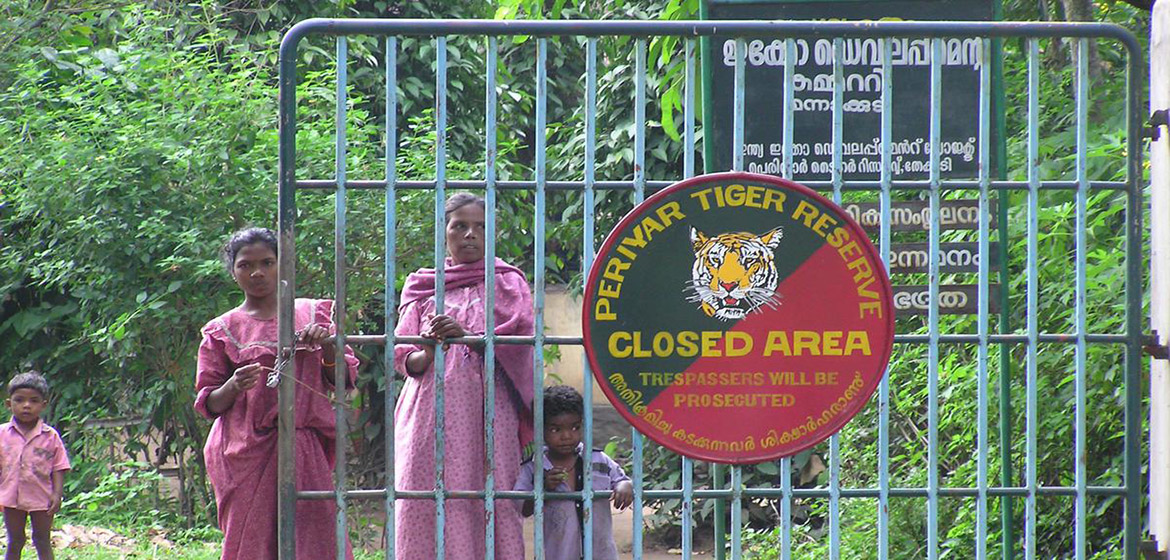The forceful displacement has led to violent clashes between local communities, forest department and the police.
By Scroll Staff
A study of has showed that 13,445 families of mainly indigenous people were displaced between 1999 and 2019 because of the government’s wildlife policies. The forceful displacement has led to violent clashes between local communities, forest department and the police.
Besides this, criminalisation of community activities and policies that seek to “militarise conservation” have led to large scale violence in protected areas, sometimes leading to murders of community members, the study titled New Research Highlights Key Issues in India’s Conservation Model, showed. This violates forest laws such as the Forest Rights Act, 2006, which recognises the need for a more inclusive form of forest governance, including co-management of protected areas.
The study, uses an interactive map, and was developed by the in collaboration with Kalpavriksh, a non-profit organisation based in India.
In protected areas, human occupation or the exploitation of resources is limited by law. But in India, these areas are home to over 43 lakh people, encompassing 5% of the national territory, according to the study. India has four types of protected areas constituted under the provisions of the Wildlife Protection Act, 1972. These are: National Parks, Wildlife Sanctuaries, Conservation Reserves and Community Reserves.
Some of the protected areas covered in the study include Barnawapara wildlife sanctuary in Chhattisgarh, Buxa Tiger Reserve in West Bengal, Jim Corbett National Park and Tiger Reserve in Uttarakhand, and Assam’s Manas National Park, among others.
The map showed that in almost all protected areas from where the data was collated, local people reported being implicated in petty forest offences, false criminal cases and subjection to mental and physical violence. Many of them, mainly women, also alleged physical harassment. Some of the offences they were charged for included grazing livestock and collecting firewood, which are classified as customary rights under the Forest Rights Act.
“This sends the message that conservation is only a priority for the state when it is set against voiceless and powerless local people. In effect, India’s conservation efforts are backfiring and creating severe problems both for the inhabitants of these protected areas and the intended wildlife it is meant to protect.”

A thematic map on conservation conflicts in protected areas in India reveals how the strict wildlife policies have undermined the rights of indigenous and local communities. [Credit: EJAtlas]
The map also showed that the highest number of conflicts took place in landscapes identified as important for tiger conservation, including those legally protected as Tiger Reserves, and informally designated as “tiger landscapes” or “tiger corridors”. Displacement of local communities from these areas is also higher.
Although major international conventions such as the or CBD, recognise the inclusion of indigenous communities and forest dwellers in the management of the protected areas and the governance of biodiversity, in India, communities that have traditionally inhabiting the protected areas have seen “their fundamental constitutional and customary rights systematically violated in the name of conservation,” the study added.
“By actively alienating local people, this model of conservation has also ignored the real reasons for wildlife population decline. These include intensive hunting of tigers and other large animals by British and local rulers in the past, and the continuous decline in wildlife habitat due to continuous large-scale diversion of biodiversity-rich areas for mega infrastructural and ‘developmental’ projects like roadways and railways, dams, mining, etc.”
— Neema Pathak Broome of Kalpavriksh.
Source:
Related to SDG 10: Reduced inequalities and SDG 16: Peace, justice and strong institutions



